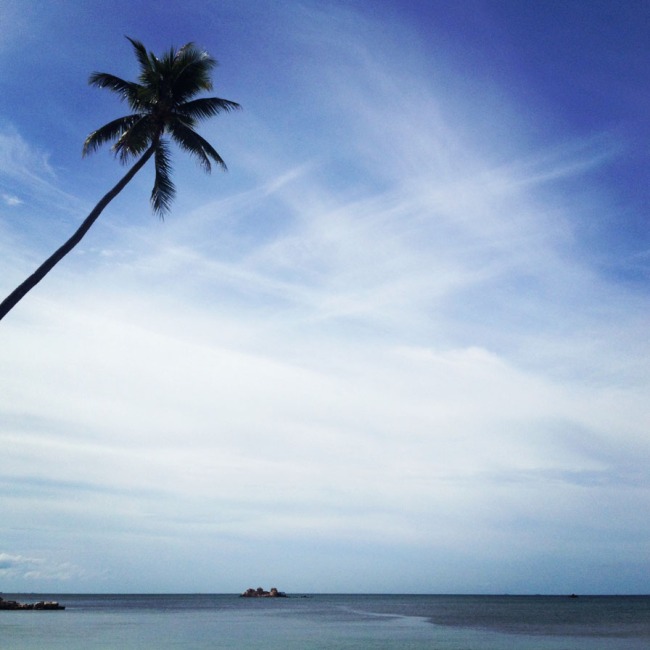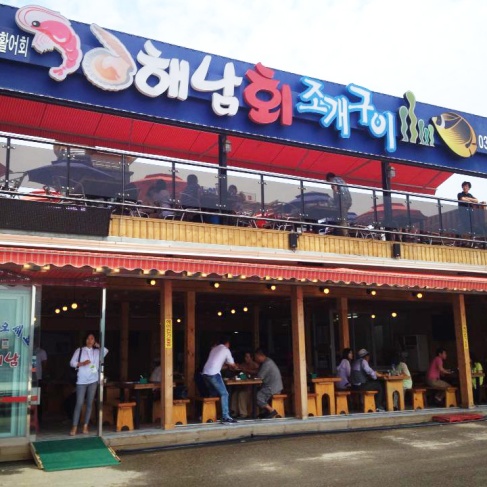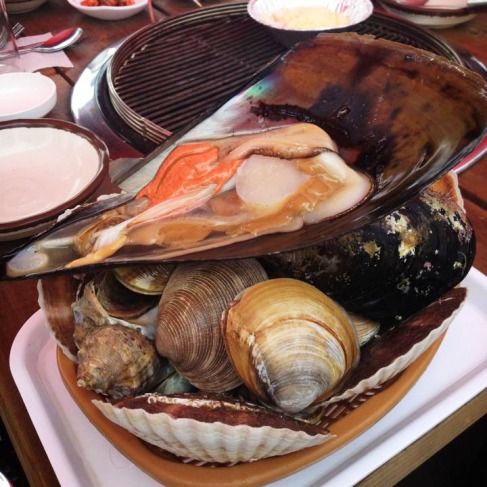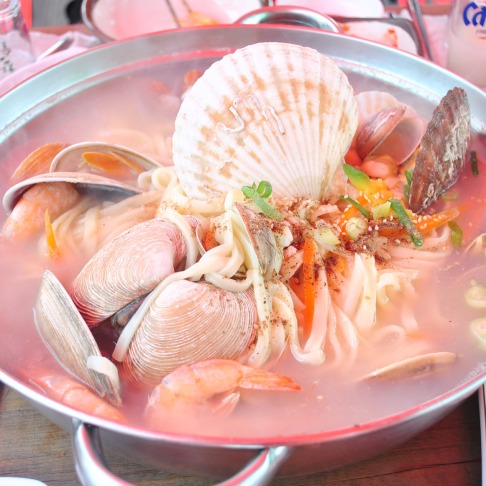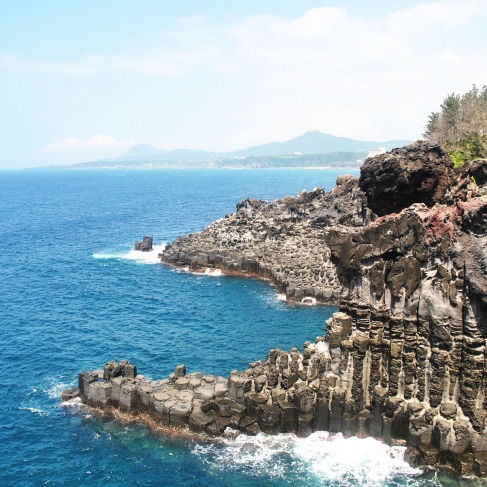Two years ago when I visited Jeju in South Korea for the first time, I heard of the island’s notorious feisty grandmothers. These are tiny women with big voices and a hardy character, unafraid to reprimand you should you be in their way.
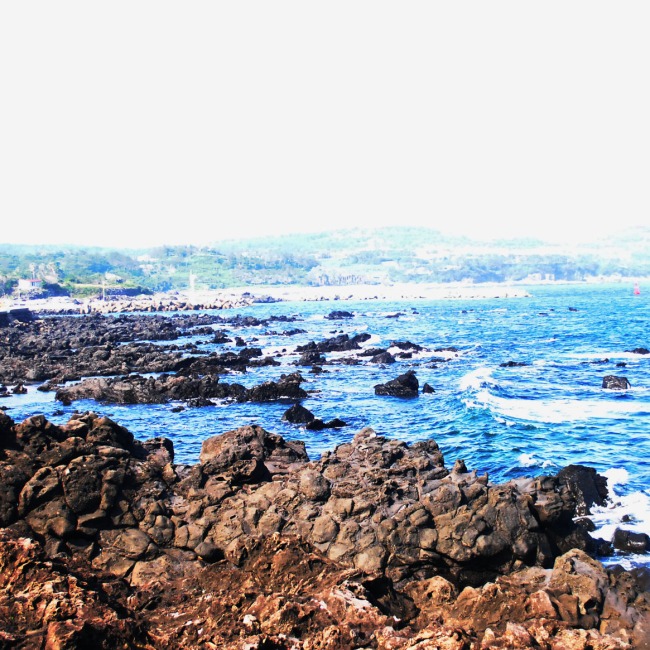
As the story goes, the people of Jeju lead a tough life as the only abundant natural resource lies in the ocean. Husbands must go out to fish, leaving wives to stay home and tend to the children. Rough oceans took many men away, so wives must also be hardy enough to make a living. And so, a number of older generation women also sought out the ocean for harvests they could sell for daily necessities.
These women became haenyeo – women of the sea. They dive without oxygen tanks to as deep as 15m in search of shellfish, sea cucumbers and fish. Most can hold their breath for up to two minutes, and would dive four to five hours each time.
The job is a tough one, and even more so for the early haenyeo who had to dive without protective rubber diving suits. They wore only cotton outfits that did not keep out the cold and protect their tender skins from rocks and other sharp shells as they searched for shellfish on the ocean floor. And when they suffered cuts, the salty ocean water stung their wounds.
It was only in the last 40 years or so that rubber diving suits came into their hands.
When I was in Jeju last week, I had the opportunity to meet and speak with two haenyo who are already in their 60s. Kim Sun-Ok (left) has been diving for a living for the past 40 years, while Moon Sun-Ja has ploughed the ocean floor for 45 years.
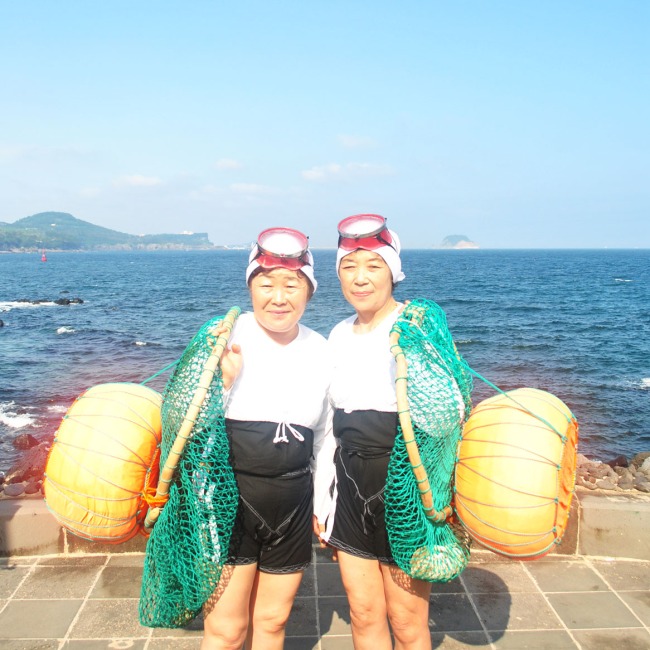
They told me that only experienced haenyeo can reach depths of 10-15m. Mid-level haenyeo can only dive up to five to 10m, while beginners only start with five metres. Many haenyeo have been diving for decades, taking their first lessons on gathering seaweed when they are 10 years old, and retiring around 83-85 years old when their bodies could no longer work.
Diving is only possible when the ocean conditions are right, such as when the tide is low or the ocean is not too choppy and cold. But when the need for money is dire, haenyeo will throw caution to the wind and dive anyway.
“We had elderly haenyeo who suffered fatal heart attacks while on the job in winter, ” Kim said softly, unlike the visions of feisty grandmothers I have always had in my mind.
Her interpreter added that it was also common for haenyeo to drown when trapped in nets cast by fishermen in motor boats above them or to be hit by passing fishing boats. Emerging from the waters too close to motor boats is dangerous too, as the engines churn the surrounding waters, making it too choppy for haenyeo to stabilise and catch their breath.
The fiery tempers of these mermaid grandmothers would flare when they come in contact with fishermen.
While it was common for generations of women under one roof to dive for a living, Kim and Moon do not wish for the same lives for their own daughters.
Kim crossed her stout arms to form a large X when she was asked if her daughter would become a haenyeo too.
“She’s a librarian now. This is a tough and dangerous job that no young woman will want,” she chuckled.
The story is always the same, isn’t it? Forefathers are willing to work hard in difficult, dirty jobs in order to create a better life for their offspring. With education, the latter no longer need to take up physical labour.
And so, haenyeo is becoming a dying trade.
Today, according to the interpreter, there are 4,800 haenyeo in Jeju. In the southern village of Beophwan in Seogwipo, Jeju, there are only 100 left – 60 are active divers and the rest have retired due to old age and health.
And the oldest active haenyeo is 85 years old.
The scale of hardship is not proportionate to their earnings. Haenyo make only US$20 or so a day, depending on the weight of the day’s harvest. In Beophwan there is a Jeju Haenyeo Experience Centre (Tel: 064 739 1232) where visitors can learn about the history of this unique job, see the old mermaids at work, try on the early cotton diving suits and take a dip in the shallow waters of the ocean, and later feast on seafood caught fresh by haenyo. Through this initiative, a good portion of the money made from visitors are used to fund the welfare of surviving haenyeo.
So if you are heading to Jeju soon, do make a trip there to meet these iron ladies of the ocean and support them in any way you can.
